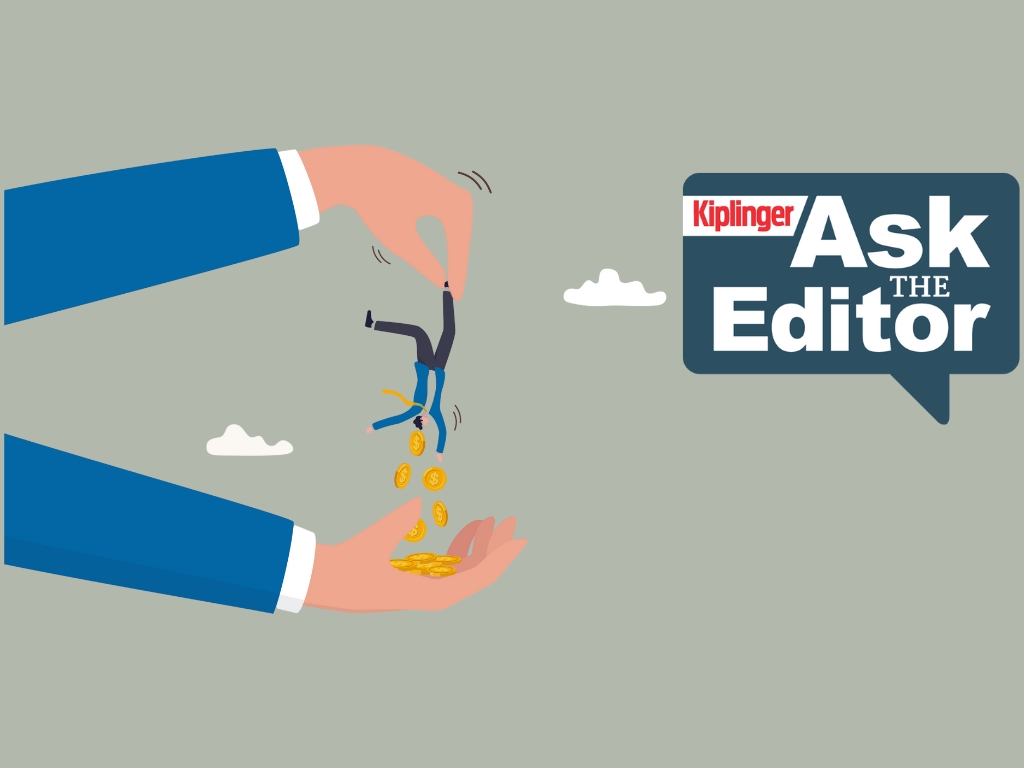The Health and Wealth Connection
Staying healthy could be your ticket to more financial securityNovember 2015
It may not always be obvious in daily life, but the evidence is clear: Our health and wealth are more closely related than we realize. One study even shows that engaging in regular exercise — at least three hours a week — can increase wages and earnings by as much as 10%.1
Paying a price for poor health
Life expectancy in the United States now stands at an all-time high. That’s 76.4 years for men and 81.2 years for women, according to the latest data from the CDC’s National Center for Health Statistics.2
We are, however, spending more of those years in poor health. Recently published research confirms that people are living longer. But they are living with costly illnesses and disabilities that eat into their financial security.3
From just $107.88 $24.99 for Kiplinger Personal Finance
Become a smarter, better informed investor. Subscribe from just $107.88 $24.99, plus get up to 4 Special Issues

Sign up for Kiplinger’s Free Newsletters
Profit and prosper with the best of expert advice on investing, taxes, retirement, personal finance and more - straight to your e-mail.
Profit and prosper with the best of expert advice - straight to your e-mail.
The price tag really adds up. Some examples:
- Direct medical costs for treating diabetes and its complications during a lifetime range from $54,700 to $130,800.4 The range accounts for age at diagnosis and gender.
- Average annual medical expenses for the treatment of heart disease range from $4,279 to $14,504, depending on age.5
- The average annual cost of obesity is $4,879 for a woman and $2,646 for a man.6 The analysis cites the extra medical and nonmedical costs — such as sick days, lost productivity, lower wages, and even increased use of gasoline — obese adults incur compared with average weight adults.
And of course, people with unhealthy habits (those who smoke, for instance) can sometimes pay higher rates for life and health insurance.
Making healthy changes that last
Understanding how people make decisions is the key to helping them change their behavior. Researchers have shown that when you reward people for engaging in physical activity, they become more active. In fact, one global study found that incentives led to a 22% increase in the number of people going to the gym over a four-year period.7
This is consistent with a recent survey in which more than 2,000 people were asked if incentives would motivate them to change their behavior. Here’s what they had they to say:
- 55% say they would be more likely to walk
- 48% say they would be very likely to get a health screening
- 46% say they would be very likely to exercise regularly
There is significant evidence that when you provide immediate rewards — such as gift cards, movie tickets and shopping discounts — for healthy behaviors, people are able to make real progress and lasting change.
One new initiative that takes this approach is the John Hancock Vitality solution. Through its exclusive U.S. partnership with Vitality, the global leader in integrating wellness benefits with life insurance products, John Hancock has created a new solution that combines traditional life insurance protection with a program that rewards people for living a healthy life.
Earning rewards for healthy behaviors
With the John Hancock Vitality solution, policyholders can earn points by completing simple everyday activities to stay healthy. These include things such as going to the gym, getting annual health screenings or staying tobacco free. Every new policyholder even receives a free Fitbit® as one way to track progress.
Points add up and can result in lower premium costs — as much as 15% lower* — as well as rewards and discounts from Hyatt, Royal Caribbean, Whole Foods, REI and others. The more wellness steps a policyholder takes, the greater their potential savings.
“We want to help policyholders connect their financial well-being to their long-term health,” says Michael Doughty, president, John Hancock Insurance. “Most Americans know they need more life insurance, and our research shows that nearly all consumers feel they could be living a healthier life. John Hancock Vitality can help them to achieve both of those goals.”
John Hancock continues to link more types of life insurance to the Vitality program. Learn more about this first-to-market program at www.jhrewardslife.com.
1 Kosteas V. The effect of exercise on earnings: evidence from the NLSY. Journal of Labor Research. June 2012.
2 U.S. Centers for Disease Control and Prevention. http://www.cdc.gov/nchs/fastats/life-expectancy.htm.
3 Murray C, Vos T, Lopez A. The global burden of disease study 2013. The Lancet. August 2015.
4 Zhuo X, Zhang P, Hoerger T. Lifetime direct medical costs of treating type 2 diabetes and diabetic complications. American Journal of Preventive Medicine. September 2013.
5 U.S. Department of Health and Human Services. Agency for Healthcare Research and Quality. http://meps.ahrq.gov/mepsweb/data_stats/MEPS_topics.jsp?topicid=4Z8
6 Dor A, Ferguson C, Langwith C, et al. A heavy burden: the individual costs of being overweight and obese in the United States. The George Washington University School of Public Health. 2010.
7 AIA Vitality: The case for incentivizing health. Using behavioral economics to improve health and wellness [white paper]. February 2014.
8 Nationwide survey conducted online by KRC Research on behalf of John Hancock. Interviews were among 2,034 adults, ages 18–69, February 2015.
* Premium savings based on a comparison between a policy with Vitality at Platinum Status and a policy without Vitality (will vary by product type and other factors, including nonguaranteed elements).
Vitality is the provider of the John Hancock Vitality Program in connection with policies issued by John Hancock. Insurance policies and/or associated riders and features may not be available in all states.
Rewards and discounts are subject to change and are not guaranteed to remain the same for the life of the policy.
The John Hancock Vitality Program is available with select John Hancock policies. Please consult your financial representative as to product availability and how premium savings may affect the policy you purchase. John Hancock Vitality Program rewards and discounts are only available to the person insured under the eligible life insurance policy. Rewards may vary based on the type of insurance policy purchased for the insured (Vitality Program Member), the ownership and inforce status of the insurance policy, and the state where the insurance policy was issued.
Insurance products are issued by John Hancock Life Insurance Company (U.S.A.), Boston, MA 02117 (not licensed in New York) and John Hancock Life Insurance Company of New York, Valhalla, NY 10595. MLINY110915069
This content was provided by John Hancock. Kiplinger is not affiliated with and does not endorse the company or products mentioned above.
Profit and prosper with the best of Kiplinger's advice on investing, taxes, retirement, personal finance and much more. Delivered daily. Enter your email in the box and click Sign Me Up.
-
 AI Appliances Aren’t Exciting Buyers…Yet
AI Appliances Aren’t Exciting Buyers…YetThe Kiplinger Letter Artificial intelligence is being embedded into all sorts of appliances. Now sellers need to get customers to care about AI-powered laundry.
-
 Ask the Editor: IRAs, 401(k)s and RMDs
Ask the Editor: IRAs, 401(k)s and RMDsAsk the Editor In this week's Ask the Editor Q&A, Joy Taylor answers questions on IRAs, 401(k)s and required minimum distributions
-
 Got $100 to Gamble? These Penny Stocks Could Be Worth the Ride
Got $100 to Gamble? These Penny Stocks Could Be Worth the RideVolatile penny stocks are high-risk plays with potentially high rewards. If you have $100 you can afford to lose, these three names are worth a look.
-
 Amazon Resale: Where Amazon Prime Returns Become Your Online Bargains
Amazon Resale: Where Amazon Prime Returns Become Your Online BargainsFeature Amazon Resale products may have some imperfections, but that often leads to wildly discounted prices.
-
 What Does Medicare Not Cover? Eight Things You Should Know
What Does Medicare Not Cover? Eight Things You Should KnowMedicare Part A and Part B leave gaps in your healthcare coverage. But Medicare Advantage has problems, too.
-
 Roth IRA Contribution Limits for 2026
Roth IRA Contribution Limits for 2026Roth IRAs Roth IRAs allow you to save for retirement with after-tax dollars while you're working, and then withdraw those contributions and earnings tax-free when you retire. Here's a look at 2026 limits and income-based phaseouts.
-
 Four Tips for Renting Out Your Home on Airbnb
Four Tips for Renting Out Your Home on Airbnbreal estate Here's what you should know before listing your home on Airbnb.
-
 Five Ways to a Cheap Last-Minute Vacation
Five Ways to a Cheap Last-Minute VacationTravel It is possible to pull off a cheap last-minute vacation. Here are some tips to make it happen.
-
 How Much Life Insurance Do You Need?
How Much Life Insurance Do You Need?insurance When assessing how much life insurance you need, take a systematic approach instead of relying on rules of thumb.
-
 When Does Amazon Prime Day End in October? Everything We Know, Plus the Best Deals on Samsonite, Samsung and More
When Does Amazon Prime Day End in October? Everything We Know, Plus the Best Deals on Samsonite, Samsung and MoreAmazon Prime The Amazon Prime Big Deal Days sale ends soon. Here are the key details you need to know, plus some of our favorite deals members can shop before it's over.
-
 How to Shop for Life Insurance in 3 Easy Steps
How to Shop for Life Insurance in 3 Easy Stepsinsurance Shopping for life insurance? You may be able to estimate how much you need online, but that's just the start of your search.